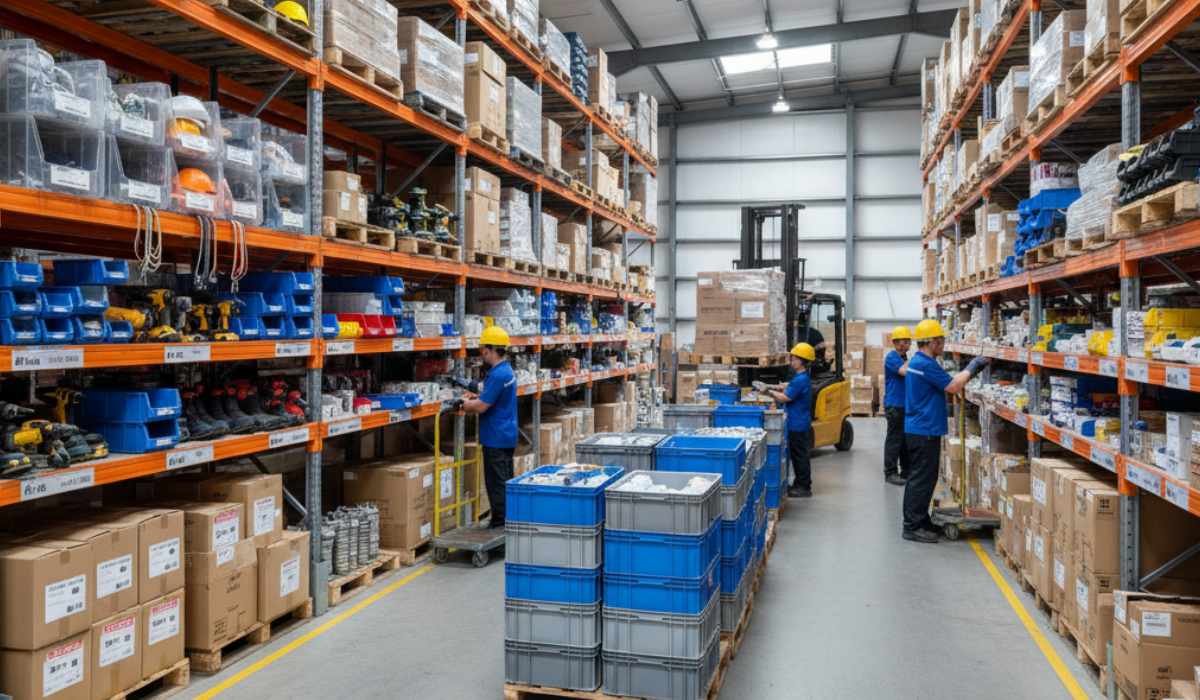In today’s industrial and commercial landscapes, PLG supplies play a vital role in ensuring smooth operations across multiple sectors. While the term may sound highly specialized, its applications span a wide range of fields—from manufacturing and construction to logistics and maintenance. Understanding what PLG supplies are, how they are used, and why they matter can provide valuable insight for professionals, businesses, and even curious individuals who want to stay informed about the infrastructure that powers everyday industries.
What Are PLG Supplies?
At its core, the phrase PLG supplies refers to tools, materials, and equipment associated with a variety of professional, logistical, and general-purpose needs. Depending on the context, PLG supplies may include:
- Professional-grade tools and instruments used in technical and industrial work.
- Logistics materials required for storage, packaging, and transportation.
- General supplies that support day-to-day functions in workshops, factories, offices, or construction sites.
These supplies often overlap across industries, which makes them essential for efficiency, productivity, and safety.
Importance of PLG Supplies Across Industries
- Manufacturing and Production
In manufacturing plants, PLG supplies can include tools, measuring devices, and consumables that workers use to maintain precision and efficiency. Without reliable supplies, production lines risk downtime, defects, and safety hazards. - Construction and Engineering
In the construction sector, PLG supplies might encompass protective gear, durable tools, and components that ensure buildings and infrastructure are constructed safely and effectively. - Logistics and Warehousing
For logistics companies, supplies such as packaging materials, handling equipment, and labeling systems are vital. They ensure products move smoothly from one point to another without damage or confusion. - Office and Institutional Use
On a smaller scale, PLG supplies also cover everyday items used in offices, schools, and public institutions—everything from maintenance equipment to organizational tools.
Key Categories of PLG Supplies
To better understand the scope of PLG supplies, let’s break them into major categories:
- Tools and Equipment
- Hand tools (wrenches, screwdrivers, pliers)
- Power tools (drills, saws, grinders)
- Measurement devices (calipers, gauges, meters)
- Safety and Protective Gear
- Helmets, gloves, and safety glasses
- Respiratory masks
- High-visibility clothing
- Logistics Materials
- Packaging boxes and tapes
- Pallets and shrink wraps
- Labeling and tracking systems
- Maintenance and Repair Supplies
- Lubricants and adhesives
- Cleaning agents
- Replacement parts and accessories
- Office and General Supplies
- Stationery items
- Storage solutions
- Organizational tools
Why Quality Matters in PLG Supplies
Using substandard supplies can lead to inefficiency, increased costs, and even workplace hazards. Quality PLG supplies ensure:
- Durability – Tools and equipment last longer under heavy use.
- Precision – Accurate measurements and consistent performance reduce errors.
- Safety – Workers remain protected from avoidable risks.
- Productivity – Efficient supplies streamline processes and reduce downtime.
Investing in high-quality supplies ultimately saves time and money while safeguarding workers and assets.
Sustainable and Eco-Friendly PLG Supplies
With industries moving toward greener practices, the demand for eco-friendly PLG supplies is growing. Companies are now incorporating recyclable packaging materials, biodegradable cleaning agents, and energy-efficient tools to minimize environmental impact. This shift not only benefits the planet but also aligns businesses with global sustainability goals.
Challenges in Managing PLG Supplies
Despite their importance, managing PLG supplies presents challenges:
- Inventory Management – Tracking stock levels to avoid shortages or overstocking.
- Cost Control – Balancing quality with affordability.
- Standardization – Ensuring all supplies meet compliance and industry standards.
- Supplier Reliability – Choosing partners who deliver consistent quality and timely shipments.
Businesses that fail to address these challenges often experience inefficiencies, increased costs, and operational disruptions.
Best Practices for Handling PLG Supplies
- Regular Audits – Conduct periodic inventory checks to avoid stock mismanagement.
- Centralized Procurement – Streamline purchasing to maintain consistency.
- Digital Tracking Systems – Use software for real-time monitoring of supplies.
- Training Staff – Ensure workers understand how to handle and store supplies properly.
- Sustainability Policies – Integrate eco-friendly practices to reduce waste.
Future Trends in PLG Supplies
The landscape of PLG supplies is evolving, shaped by innovation and technology. Some future trends include:
- Smart Tools – Equipment embedded with sensors to provide real-time feedback.
- Automation – Supplies designed for compatibility with automated systems.
- Customization – Tailor-made supplies to meet industry-specific requirements.
- Circular Economy Practices – Reuse and recycling integrated into supply chains.
These trends reflect the growing need for efficiency, sustainability, and innovation in supply management.
Informational FAQs on PLG Supplies
Q1: What does PLG stand for in PLG supplies?
PLG can refer broadly to Professional, Logistics, and General supplies, though its usage may vary depending on industry context.
Q2: Are PLG supplies limited to industrial use?
No. While many PLG supplies are critical in industrial and construction fields, they are also used in offices, institutions, and everyday work environments.
Q3: How can businesses reduce the cost of PLG supplies?
By purchasing in bulk, using digital inventory systems, and adopting eco-friendly reusable materials, businesses can reduce long-term expenses.
Q4: Why is sustainability important in PLG supplies?
Eco-friendly supplies help reduce waste, conserve resources, and improve corporate responsibility, aligning businesses with environmental standards.
Q5: What should companies consider when choosing PLG suppliers?
Reliability, product quality, compliance with safety standards, affordability, and sustainability are key considerations.
Conclusion
PLG supplies may seem like a simple concept at first glance, but they form the backbone of countless industries and day-to-day operations. From manufacturing plants and construction sites to warehouses and offices, these supplies ensure efficiency, safety, and sustainability. By focusing on quality, proper management, and eco-friendly alternatives, businesses and institutions can maximize the value of PLG supplies while adapting to future trends.

